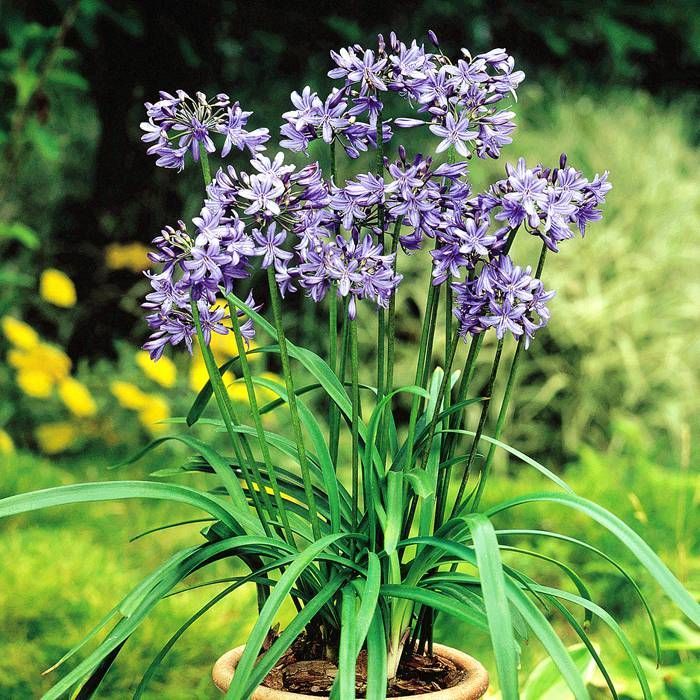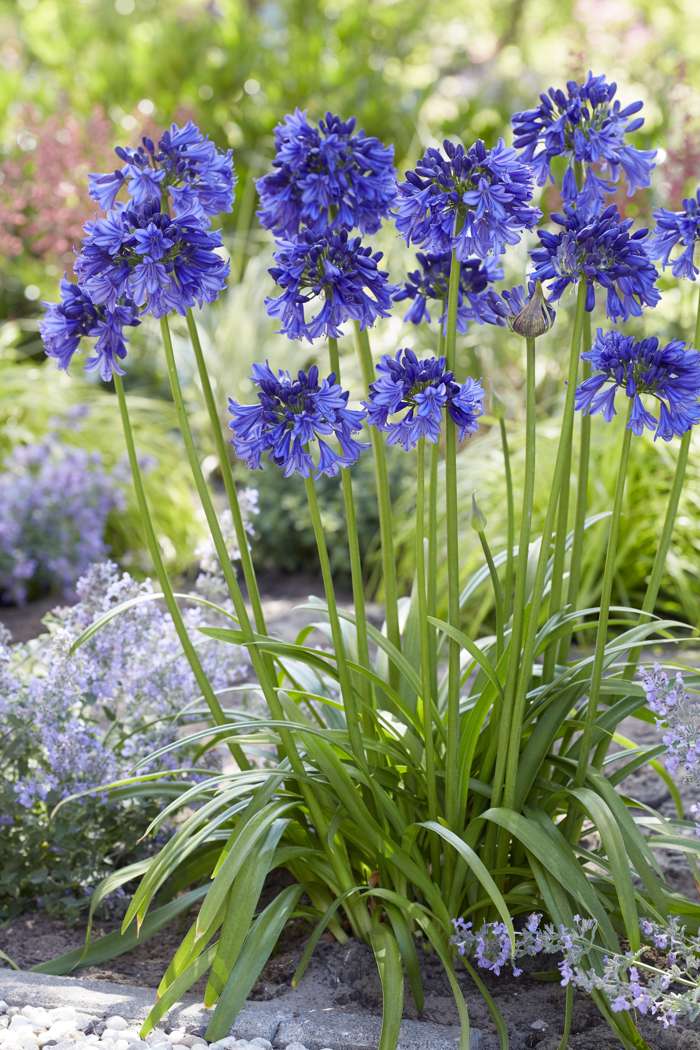Typical Agapanthus Problems and How to Solve Them
Typical Agapanthus Problems and How to Solve Them
Blog Article
Unleashing the Secret to Successful Agapanthus Farming: Advice for a Flourishing Yard
In the realm of horticulture, cultivating agapanthus efficiently calls for a critical method that encompasses different aspects of plant treatment. By understanding the subtleties of agapanthus growing, one can produce an environment where these plants flourish and grow perfectly.
Growing Agapanthus: Best Practices
When planting Agapanthus, correct dirt prep work is essential for making sure effective growth and advancement of these lovely blossoms. Agapanthus, generally called Lily of the Nile or African lily, flourishes in well-draining dirt with a slightly acidic to neutral pH level - Agapanthus. Prior to planting, it is essential to modify heavy clay soils with organic issue such as compost or peat moss to enhance drainage and provide vital nutrients for the plants
To plant Agapanthus, pick a place that obtains complete sunshine to partial color, as this will advertise healthy development and bountiful flowering. Dig an opening twice the size of the plant's root sphere and put the Agapanthus at the very same depth it was formerly expanding. Gently backfill the hole with dirt, weighing down securely to get rid of any air pockets around the roots.
Water the newly planted Agapanthus thoroughly and remain to maintain the dirt evenly moist, especially during the plant's energetic growing season. Agapanthus. Using a well balanced fertilizer once a month can even more support the plant's growth and flowering. By adhering to these ideal techniques for growing Agapanthus, you can produce a magnificent display screen of these captivating blossoms in your garden
Suitable Soil Issues for Agapanthus
For optimum growth and flowering success of Agapanthus plants, making sure the dirt conditions are ideal is important. Agapanthus chooses dirt that is rich in nutrients, so incorporating a balanced plant food throughout the growing period can promote healthy development and dynamic blossoms.

Watering and Fertilizing Tips
To guarantee healthy growth and dynamic blossoms, correct watering and feeding techniques are vital for successful Agapanthus cultivation. Agapanthus plants take advantage of routine watering, especially throughout the expanding period. It is advised to water deeply as soon as a week, ensuring the soil is moist yet not saturated. Throughout heat or in pots, even more constant watering may be required to prevent the dirt from drying entirely.
When it pertains to fertilizing Agapanthus, a well balanced plant food browse around these guys with equal parts nitrogen, phosphorus, and potassium can be applied in the spring to promote healthy development and blooming. Slow-release fertilizers are optimal for offering nutrients gradually over an extended period. Avoid over-fertilizing, as this can bring about extreme vegetation growth at the expense of blooms.
Furthermore, including raw material like compost right into the soil can improve nutrient levels and enhance dirt framework, aiding in the total health and wellness of the Agapanthus plants. By complying with these watering and feeding suggestions, garden enthusiasts can ensure their Agapanthus plants prosper and create stunning screens of blossoms.
Pruning and Deadheading Methods
Correct trimming and deadheading techniques play a vital role in maintaining the wellness and appearances of Agapanthus plants, complementing the crucial practices of watering and fertilizing for effective cultivation. Pruning Agapanthus entails removing spent blossom heads, yellowing or dead leaves, and total shaping of the plant to advertise far better growth. Deadheading, the process of removing faded flowers, not just enhances the plant's look however additionally encourages further flowering.
When deadheading Agapanthus, it is suggested to snip off the blossom stem at the base using sharp, clean shears. This process redirects the plant's energy from seed production back right into origin and vegetation development, advertising a healthier and a lot more durable plant. Regular deadheading can extend the blooming duration of Agapanthus and stop self-seeding, which can cause congestion.
In regards to trimming, Agapanthus typically advantages from a light trim after blooming to clean up the plant and encourage fresh growth. Reducing the spent flower stems and getting rid of any type of damaged or dead foliage aids keep the plant's vitality and total look. Nevertheless, it is necessary to prevent reducing into the crown of the plant, as this can damage its wellness.

Protecting Agapanthus From Pests and Diseases
Executing effective parasite and disease management approaches is critical to safeguarding the wellness and vigor of Agapanthus plants in cultivation. Agapanthus are usually sturdy plants, however they can still come down with various pests and conditions if not effectively taken care of. One common parasite that impacts Agapanthus is the Agapanthus borer, a caterpillar that passages into the plant, triggering damages to the leaves and flowers. To avoid infestations, normal evaluation of the plants is essential. If borers are identified, they can be manually gotten rid of, or insecticidal soap can be utilized as a control action.
In enhancement to insects, Agapanthus are prone to diseases such as origin rot and fungal fallen leave areas. By staying alert and dealing with insect and disease problems quickly, garden enthusiasts can aid their Agapanthus grow and flourish.

Final Thought
In conclusion, effective cultivation of agapanthus needs proper planting strategies, optimal soil problems, appropriate watering and fertilizing, normal pruning and deadheading, and defense from pests and illness. By following these ideas and tricks, gardeners can make certain get redirected here a growing garden loaded with gorgeous agapanthus blossoms. Agapanthus. Remember to maintain constant treatment and attention to detail to advertise the wellness and long life of these magnificent plants
When planting Agapanthus, appropriate soil prep work is vital for making sure effective development and development of these gorgeous flowers.Water the recently grown Agapanthus completely and proceed to maintain the soil uniformly damp, particularly during the plant's active growing season.For optimum development and blooming success of Agapanthus plants, making sure the soil conditions are perfect is essential. When growing or transplanting Agapanthus, guarantee the dirt is well-prepared to look here provide the required foundation for the plants to establish themselves successfully. One usual bug that impacts Agapanthus is the Agapanthus borer, a caterpillar that tunnels into the plant, creating damage to the leaves and flowers.
Report this page